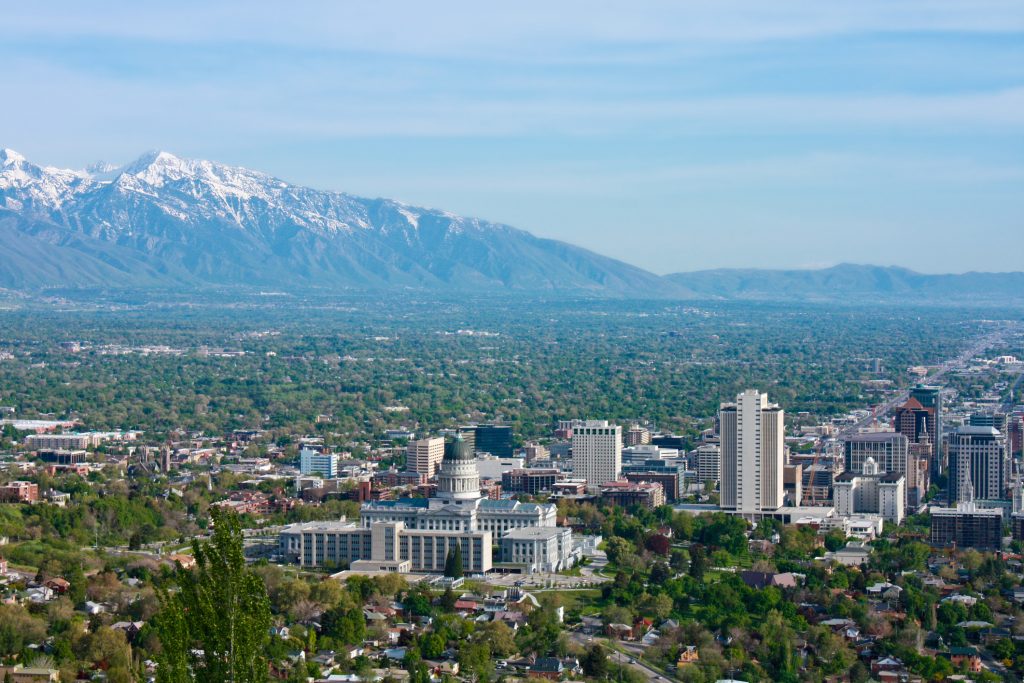Is COVID-19 the ‘great accelerator’?
Utah set to win big as big cities continue to lose residents

Even before the onset of COVID-19, big U.S. metro areas were losing the domestic migration war to smaller, midsize cities and suburbs in a trend reversal that dates back almost a decade.
Now, restrictions brought on by the global pandemic have only highlighted the downsides of big cities and the relative upsides of locales with assets like low cost of living, growing economies and easy access to outdoor recreation opportunities.
Sound familiar?
Utah could be perfectly positioned to become one of the top destinations for those fleeing urban residential settings that have become, for some, considerably less desirable amid the current public health crisis.
Two national experts on urban development, Joel Kotkin, presidential fellow in urban futures at Chapman University, and Wendell Cox, senior fellow at the Urban Reform Institute, presented research and insight last week during an online discussion hosted by the University of Utah’s Kem C. Gardner Policy Institute.
Kotkin and Cox said data shows residents, on a net basis, have been moving out of U.S. metro areas with populations of 1 million or more and finding new homes in smaller cities going back to 2012. And in the past several months, restrictions in place across the country aiming to mitigate the spread of COVID-19 have functioned as a “great accelerator” of that migration.
Kotkin said amid crisis conditions, certain attributes of a place become even more prominent, and Utah was emerging as a clear winner on the attractor side of that equation.
“There’s a lot of really good stuff going on in Utah,” Kotkin said. “I think there are also many changes that may seem tragic, and are tragic, but really open us up to some new possibilities.
“The Utah model is something that is worth studying. I think that, in different ways, Utah is showing us some things we might think about if we want a more egalitarian society.”
“Millennials were on the move before COVID-19 to suburbs and smaller cities,” Kotkin said. “Part of it was related to cost.”
But the other part was “growing up and having kids and starting to worry about things like public schools.”
Cox said that before the novel coronavirus disrupted daily life around the world, people were moving out of cities in part to improve their lives by reducing time spent getting back and forth to work.
He noted that in most parts of the country, the far preponderance of jobs are located outside of city central business districts. While New York City is a minor exception to the rule, with about 20% of the state’s jobs located in the downtown area, in most places only 6% to 8% of the workforce is employed in urban areas.
Cox said it may be time to reevaluate a popular urban development strategy that prioritizes investment in projects that center on easy transit access and, instead, work to incentivize job center development near the places people prefer to live.
He noted that remote work situations and its attendant telecommuting has, under pandemic restrictions, essentially replaced physical commuting in the New York City area, where commuter rail ridership is down over 70% and in San Francisco, where the Bay Area Rapid Transit system is down nearly 90% in rider volume.
He also noted the ranges of commutes were continuing to increase with some expanding to 60 or 80 miles away from job centers.
Kotkin said the pitfalls of transit development can be seen in Southern California, where tens of billions of dollars in transit infrastructure investment failed even before pandemic conditions to meaningfully increase ridership.
“This insistence that we keep building these light rail systems and spending a fortune on them, frankly, we’d be better off with more day care centers,” Kotkin said.
Cox warned that while Utah was a high performer on many metrics that make it an attractive destination for those looking to exit urban living situations, the state needs to monitor affordability. He noted that Ogden, Provo and Salt Lake City were all rated above the national average based on a measurement that uses a ratio of median housing prices to median wages to determine a housing affordability quotient. While anything under 3.0 is considered in the affordable range, those three Utah cities are all above 3.8 and fall in the “moderate” to “seriously unaffordable” range.
That said, both men believe Utah is well poised to recover quickly from the impacts of COVID-19 and encouraged state and local leaders to stay the course.
“More than anything, keep doing what you’re doing in Utah and begin to understand that your intrinsic strengths are great strengths,” Kotkin said. “I assume that you’re not sending missions to Portland anymore to say, ‘this is how to run a city’ because Portland is giving San Francisco a run for its money in dysfunction and lunacy.
“I’d say, look at yourself and look at what’s happened and see how you can build on your strengths.”
Written By Art Raymond@DNTechHive Published
SEARCH ALL UTAH HOMES


lindasecrist.com
Linda Secrist’s Salt Lake City Real Estate Home Page • Salt Lake City Real Estate • Draper Real Estate • Holladay Real Estate • Sandy Real Estate • South Jordan Utah Real Estate • Salt Lake City’s Top Real Estate AgentLinda Secrist & Associates is the top selling team in luxury homes in the SLC Market. They have received countless awards over the past 20 years, including “Sales Team of The Year” for over 10 years including 2019! Linda Secrist is #54 in the top 100 Agents in the World in luxury residential real estate. If you’re searching for homes in Sandy, Salt Lake, Cottonwood Heights, Millcreek, Draper, South Jordan, Bountiful, Centerville, Farmington or anywhere in northern Utah, Linda Secrist & Associates are the real estate agents to call. If you’re buying or selling a home, don’t hesitate to text or call us at 801-455-9999!

